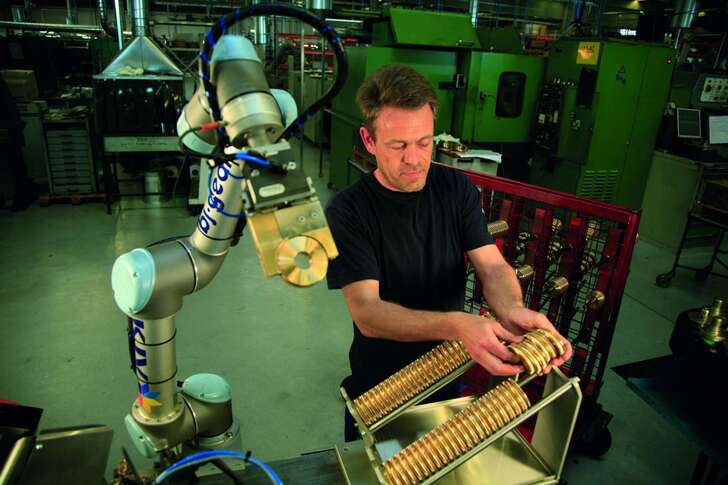The reduction in logistics times has forced companies to automate processes to achieve maximum productivity. A good example of this is the popularization of robotic arms, as they streamline repetitive tasks that were previously assigned to an operator.
In fact, this is a technology that not only improves efficiency in production and logistics but also makes it possible to carry out automatically without human intervention─ the loading of heavy objects and operations that require high precision.
What exactly is a robotic arm?
A robotic arm is a programmable device whose main functions and behavior resemble those of a human arm. The different parts that make up the robot are joined and connected to each other so that it performs rotational and translational movements.
At the end of the arm, as an extension, the robotic hand is located, which can be in the form of a clamp, a suction cup, or a claw, depending on the function it must perform. These can be, among others, clamping, moving goods, picking, or assembly of parts.
These artifacts are used mainly to simulate or substitute the abilities of the human arm during production or logistics operations. Being fully automated, the robotic arm performs the same functions that an operator could perform, but with the ability to handle heavier loads at greater speed and without the fatigue that repetition of movements implies for a human.
These devices, which can operate alone or be part of an assembly line, are used in industries that demand extreme precision, such as the automotive industry. They are also useful in those that require making movements and in the pick and place (pick and place) of heavy loads.
Robotic arm: advantages of automating operations
The implementation of a robotic arm in a production or storage facility facilitates:
- Significantly increase operational performance: Unlike an operator, robotic arms can repeat the same task for as long as necessary.
- Optimize and provide efficiency to complex processes: in the face of heavy or operational loads that require great precision, such as the assembly of certain parts in the automotive sector, only with a robotic arm can maximum performance be achieved.
- Guarantee maximum safety for all operators: the inclusion of these robots in production lines and in logistics prevents operators from being exposed to poorly ergonomic operations, which entail greater risks.
- Reduce production costs and workforce: despite the initial investment, in the long run, automation reduces costs and enhances the workforce required depending on the installation, offering a rapid return on investment (ROI).
- Ensure the viability of operations in extreme conditions: Only a robotic arm can ensure productivity in refrigerated or controlled atmosphere areas.
In return, it must be taken into account that the implantation of robotic arms represents a high initial investment for the company. And its true benefit only occurs in repetitive, very specific tasks, in which loads of similar volume are handled. It is for this reason that robotic arms are not recommended when there are no repetitive movements of an arm (small movements or turns) and when the merchandise is not homogeneous.
Media Details
Email: [email protected]
Phone: +45 89 93 89 89
Address: DK-5260, Odense S
Source: Story.KISSPR.com
Release ID: 17067

